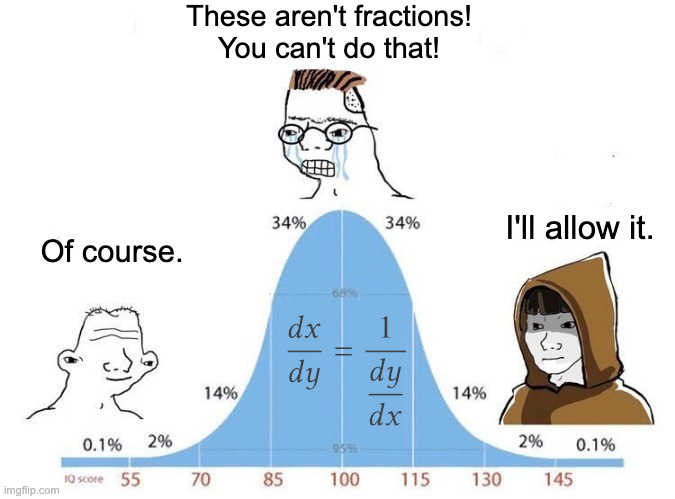Approximation of Inverse, Inverse of Approximation
The inverse of an approximation is an approximation of the inverse." This statement is either obvious or really clever. Maybe both.
Logs and exponentsLet's start with an example. For moderately small x,
That means that near 1 (i.e. near 10 raised to a small number,
The inverse of a good approximation is a good approximation of the inverse. But the measure of goodness might not be the same in both uses of the word good." The inverse of a very good approximation might be a mediocre approximation of the inverse, depending on the sensitivity of the problem. See, for example, Wilkinson's polynomial.
Inverse function theoremNow let's look at derivatives and inverse functions. The derivative of a function is the best linear approximation to that function at a point. And it's true that the best linear approximation to the inverse of a function at a point is the inverse of the best linear approximation to the function. In symbols,
This is a good example of a bell curve meme, or coming full circle. The novice naively treats the symbols above as fractions and says of course." The sophomore says Wait a minute. These aren't fractions. You can't just do that." And they would be correct, except the symbols arelimits of fractions, and in this context naive symbol manipulation in fact leads to the correct result.

However, the position on the right side of the meme is nuanced. Treating derivatives as fractions, especially partial derivatives, can get you into trouble.
The more rigorous statement of the inverse function theorem is harder to parse visually, and so the version above is a good mnemonic. Iff(x) =y then
The same is true in multiple variables. If f is a smooth function from n to n then the best linear approximation tof at a point is a linear transformation, which can be represented by a matrixM. And the best linear approximation to the inverse function at that point is the linear transformation represented by the inverse ofM. In symbols,
There's fine print, such as saying a function has to be differentiable in a neighborhood of x and the derivative has to be non-singular, but that's the gist of the inverse function theorem.
Note that unlike in the first section, there's no discussion of how good the approximations are. The approximations are exact, at a point. But it might still be the case that the linear approximation on one side is good over a much larger neighborhood than the linear approximation on the other side.
The post Approximation of Inverse, Inverse of Approximation first appeared on John D. Cook.